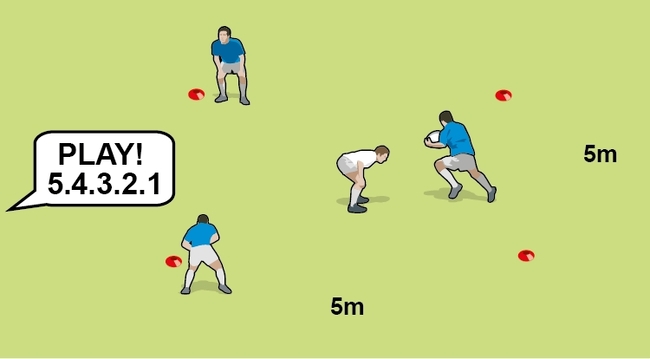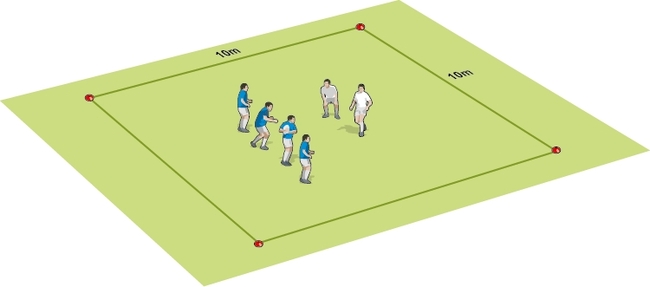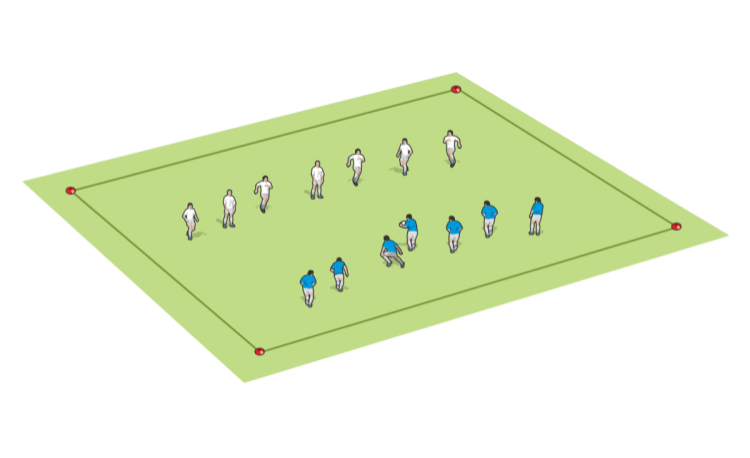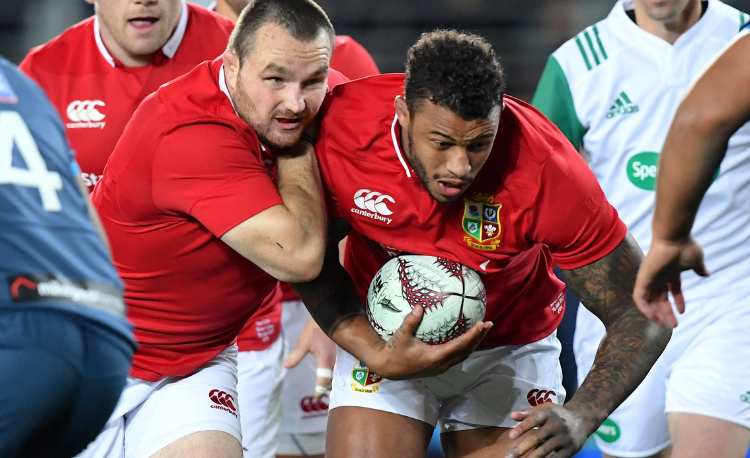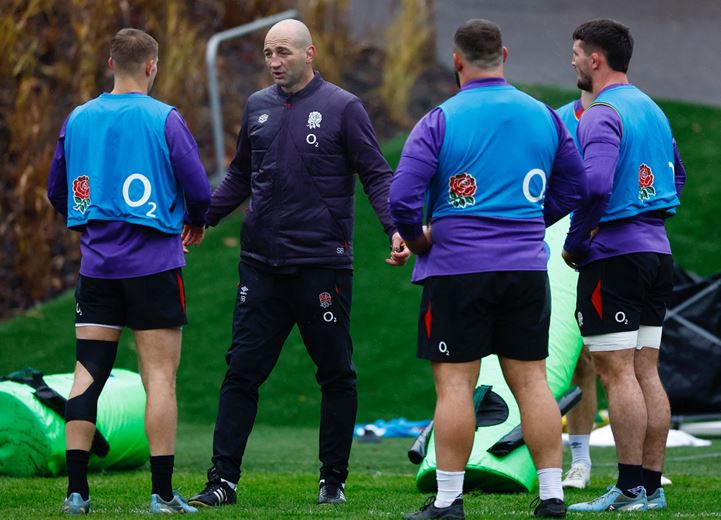Using games to create a positive environment
NICK HILL on how a learner-centred culture translates into his training sessions.
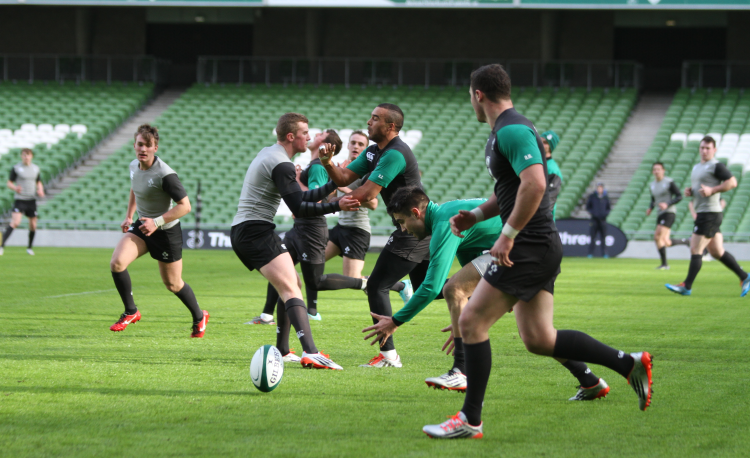
Flow plays a big part in making learning positive.
It is where the player is in "a state of being absorbed in the experience of action, through intense concentration, as the athlete is lost in the flow of the experience. It provides a positive affective experience, through which deep learning occurs, especially when the coach ’gets the game right’" (Thorpe and Bunker, 2008).
The key to creating flow in players is to play conditioned games, for at least five minutes at a time, but for definitely no more than 10 minutes.
Through experience, five minutes allows for the game to get up and running and allow the players to have a good go at playing and trying things. Ten minutes is too unrealistic for the game to flow without any teaching intervention from the coach.
Somewhere along the line, there will be a stumbling block that will prevent progress from being made, if you allow the game to keep going on for a very long time without an intervention. You will have a gut feeling of when the time is right to stop the game.
Flow doesn’t always happen. Sometimes the game you design doesn’t quite work. You then either have to change some rules or conditions at the time, or you reflect on the experience after the session, ready for the next time you will use that game.
How it might work
After five minutes, I would ask each team to get into a huddle and get one of the leaders in that team to ask the following questions to their teammates: “What are we doing well?” and, then, "What are we not doing well?”.
Subsequently, I would facilitate them asking “What do you need to work on?", followed by "What conditions or rules could you add or take away to help the area you need to work on?”.
This last part, where you start to empower the players to take ownership of their learning environment, is very important. It increases their intrinsic motivation and, thus, their effort, concentration and participation in the game that they are now designing, which, in turn, increases the intensity and quality of the game.
Mistakes culture
If there is a little knock-on, and the same player collects the ball, I call “Play on”.
Similarly, if a player tried a very difficult offload, but it was technically a forward pass, I would also call "Play on". If a poor pass went straight into touch, I would just throw a second ball towards the other team.
Each scenario eradicates any emphasis on the mistakes made, and therefore builds a culture of it being okay to make them.
Mistakes happen when players try new, or difficult, things. When players attempt difficult skills, it shows they are trying to push themselves in scenarios which challenge them.
By making the mistake, the learning process kicks in and the players will reflect on what they did and how to do it better. They can then try again soon afterwards, as the game continues to carry on.
Depending on the rules of the game, the players will have lots of goes at trying the new or difficult skills and tactics.
- Approach based on Positive Pedagogy for Sport and Coaching, Sport Education and Society (Richard L. Light/Stephan Harvey, 2015)
designing better games
I use a clear template, based on Anton Antonovsky’s salutogenic theory and sense of coherence:
- Comprehensibility: Knowing why, when and where to do things in the context of a game, not just the how.
- Manageability: Incorporating challenges where players feel they have support from their team-mates and their coach.
- Meaningfulness: Where training sessions are designed in the context of the game and learning is related to the game that they will play.
I design conditioned games to work on a tactic and/or a technical skill, where I let them play for at least five minutes and I only referee the rules. I do not say anything else – I allow the players to work out and try different solutions to the problem.
I ask open-ended questions, allowing thinking time before taking answers. I also have a culture of asking players to put their hands up, rather than shouting out, so that players do not shut down other players’ thinking.
Thank you for reading
to enjoy 3 free articles,
our weekly newsletter, and a free coaching e-book
Or if you are already a subscriber, login for full access
Newsletter Sign Up
Coaches Testimonials

Gerald Kearney, Downtown Las Vegas Soccer Club

Paul Butler, Florida, USA

Rick Shields, Springboro, USA

Tony Green, Pierrefonds Titans, Quebec, Canada
Subscribe Today
Be a more effective, more successful rugby coach
In a recent survey 89% of subscribers said Rugby Coach Weekly makes them more confident, 91% said Rugby Coach Weekly makes them a more effective coach and 93% said Rugby Coach Weekly makes them more inspired.
Get Weekly Inspiration
All the latest techniques and approaches
Rugby Coach Weekly offers proven and easy to use rugby drills, coaching sessions, practice plans, small-sided games, warm-ups, training tips and advice.
We've been at the cutting edge of rugby coaching since we launched in 2005, creating resources for the grassroots youth coach, following best practice from around the world and insights from the professional game.




